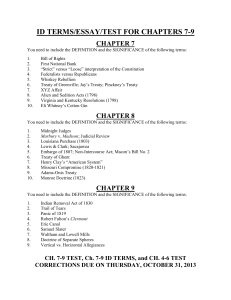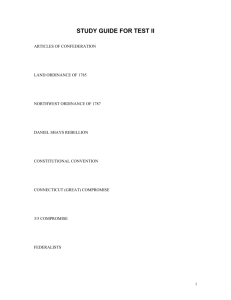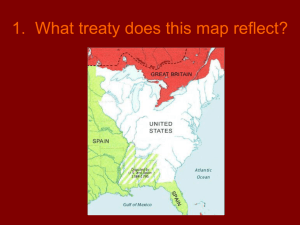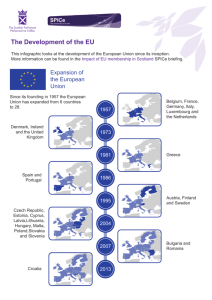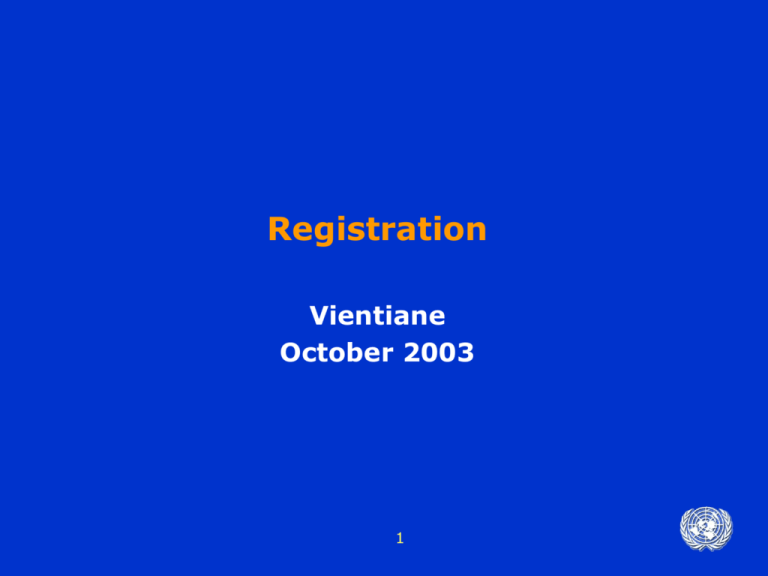
Registration
Vientiane
October 2003
1
Origins and Policy Objective of Article
102 of the United Nations Charter
•
To avoid secret diplomacy and the negative
implications that would ensue for international
relations (W. Wilson)
•
Article 18 of the Covenant of the League of Nations
Every treaty or international engagement entered
into hereafter by any Member of the League shall
be forthwith registered with the Secretariat and
shall as soon as possible be published by it. No
such treaty or international engagement shall be
binding until so registered
2
United Nations Charter Article 102
•
Paragraph 1: Every treaty and every international
agreement entered into by any Member of the
United Nations after the present Charter comes
into force shall as soon as possible be registered
with the Secretariat and published by it
•
Paragraph 2: No party to any such treaty or
international agreement which has not been
registered in accordance with the provisions of
paragraph 1 of this Article may invoke that treaty
or agreement before any organ of the United
Nations
3
Important Note
•
Registration of an instrument submitted by a
member state does not imply a judgment by the
Secretariat on the nature of the instrument, the
status of a party, or any similar question
•
It is the understanding of the Secretariat that its
action does not confer on the instrument the
status of a treaty or an international agreement if
it does not already have that status and does not
confer on a party a status which it would not
otherwise have
4
Implications of Article 102
•
Paragraph 1: Every treaty and every international
agreement entered into by any Member of the United
Nations after the present Charter comes into force
shall as soon as possible be registered with the
Secretariat and published by it
Member State: legal obligation to submit for
registration all international agreements/treaties
Secretariat: mandated to publish all agreements
registered
5
Implications of Article 102
•
Paragraph 2: No party to any such treaty or
international agreement which has not been
registered in accordance with the provisions of
paragraph 1 of this Article may invoke that treaty
or agreement before any organ of the United
Nations
6
Implications of Article 102:
Invocation
•
Non-registration precludes the invocation of a
treaty or international agreement before any organ
of the United Nations
•
Mere mention of a treaty before a UN organ does
not constitute invocation
•
Reliance on a treaty as the foundation of a party’s
claim or counterclaim may constitute invocation
but to date no objections by the parties
7
Article 102(2): Sanctions and
Penalties
•
Article 102(2) applies only to parties to an
unregistered agreement
Third parties are at liberty to invoke the treaty
at any time
•
Not for the UN organ to ex officio raise the issues
•
Sanctions only applied if a party objects to the
reliance on a non-registered agreement
8
Article 102(2): Sanctions and
Penalties
•
Not sufficient under Article 102(2) that an
agreement has been registered
Registration must take place in accordance
with Article 102(1) “as soon as possible”
9
“Treaty” or “International
Agreement” under Article 102
The Charter provides no definition
• Regulations to give effect to Article 102 (1946)
•
[Resolution 97 (I), as modified by resolutions 364 B
(IV), 482 (V) and 33/141 A, adopted by the GA on 1
December 1949, 12 December 1950 and 18 December
1978 and by GA Resolution 153 of 15 December 1997]
Article 1: “whatever its form and descriptive name”
• Vienna Convention: “treaty” means an international
agreement concluded between States in written form
and governed by international law, whether
embodied in a single instrument or in two or more
related instruments and whatever its particular
designation (Article 1.1(a))
•
10
“Treaty” or “International
Agreement” under Article 102
•
•
•
•
•
•
•
Treaty
Convention
Exchange of notes/letters
Protocol
MOU
Minutes
Unilateral Declaration
11
“Treaty”or “International
Agreement”under Article 102
•
Unilateral legally binding undertakings
e.g. Acceptance of the ICJ’s Compulsory
Jurisdiction (Article 36(2) of the ICJ Statute)
e.g. Declaration by Egypt regarding the Suez Canal
and its operation was effected in 1957 because
Government of Egypt considered the declaration a
binding international instrument
12
“Treaty” or “International
Agreement” under Article 102
•
•
•
Intention to create legal obligations under international
law
– Imposition of legal obligations on parties at
international law
Binding at international law
registrable
e.g. Entry into force method
Not binding at international law
not registrable
e.g. Political declaration
Diplomatic recognition
rescinded “at will”
Agreements governed by domestic law
13
Treaty-Making Capacity
•
At least two parties treaty-making capacity
res ipsa loquitor
– Sovereign states
– Intergovernmental organizations with treatymaking capacity
•
Non-state entities
– In determining whether an entity is a state,
Secretariat guided by relevant GA/SC
resolutions
– Certain entities which appear to possess
characteristics of states are not recognized as
states by Secretariat
14
Treaty-Making Capacity
•
Treaty-making capacity presumes international
legal personality exists
e.g. European Community
•
Legal personality does not connote treaty-making
capacity
e.g. Multinational corporations such as Exxon
15
International Organizations
•
Intergovernmental organizations (IGO)
– Possess treaty-making capacity
•
Non-governmental organizations (NGO)
– Do not possess treaty-making capacity
16
Intergovernmental Organizations
Characteristics Consistent with
Secretary-General’s Practice
•
•
•
•
•
•
Usually established by governmental agreement
Include three or more nation states as parties
International legal personality distinct from that of
the states which established it
Constituent instrument of an IGO is often a treaty
Organs indicating a permanent autonomous
structure for the achievement of definite goals, as
mandated by the parties to the constitutive
instrument
IGOs can be a party to an IGO
17
Intergovernmental Organizations
Examples
•
Universal Postal Union
– Established by the Treaty of Berne in 1874
•
Comprehensive Test Ban Treaty Preparatory
Commission
– Established by a resolution adopted by the
Meeting of States Signatories in 1996
– Recognized by General Assembly in 1996
Resolution 51/45
18
Non-governmental Organizations
Characteristics consistent with
Secretary-General’s Practice
•
International organization not established by
intergovernmental agreement (ECOSOC res. 2/3 11
February 1947)
Governed by the law of the country where the NGO is
incorporated
• Includes commercial and private organizations
• States not usually members of NGOs
• Sometimes entrusted with functions typical to States
•
e.g. - International Union for Conservation of Nature and
Natural Resources
- International Committee of the Red Cross
19
Legal Personality of IGO
Conventional Approach
•
Historically, legal status of IGOs raised concern
among governments regarding sovereignty issues
•
International legal personality was rarely conferred
e.g. Bilateral Host Agreements (domestic law, not
international law)
20
Legal Personality of IGO
Current Approach
In the last century legal personality regularly
conferred by constituent instrument
• When legal personality not explicitly conferred
– Standard: whether an IGO requires legal
personality on the international plane for the
exercise and fulfillment of its functions
– Reparations Case for Injuries Suffered in the
Service of the United Nations – ICJ Adv. Opinion
of 11 April 1949
• State parties to an IGO can advise the Secretariat
if they do not consider an entity as possessing
international legal personality or treaty-making
capacity
•
21
Treaty Making Capacity
Standard: treaty making capacity conferred by
reasonable implication as a competence required
for IGO to discharge its functions effectively
– Limited to subject matter falling within its
competence as an IGO
• Application: Subjects of International Law
– States General Competence
– IGOs
Principle of “Specialty”
– Certain Expenses of the United Nations – ICJ
Adv. Opinion of 20 July 1962
• States invest IGOs with powers, the limits of which
are a function of the interests of the states
•
22
Summary
•
Treaty/International Agreement
– Whatever its form and descriptive name
•
Parties
– Must have treaty-making capacity on the
international plane
•
Intention to create obligations binding under
international law
23
Registration
•
Registration:
•
Multilateral Treaties: 3 or more parties possessing
treaty making capacity
•
Bilateral Treaties: 2 parties each possessing treaty
making capacity (no reservations)
- Several states may constitute 1 party
e.g. Europe Agreement establishing an association between
the European Communities and their Member States, of
the one part, and the Czech Republic, of the other part
24
Registration (Cont’d)
•
Ex officio registration: any treaty to which the UN
is a party shall be registered unilaterally by the
UN, including subsequent actions
•
Subsequent Actions/Modifications
– Bilateral
– Multilateral
25
Subsequent Actions
Multilateral
– Ratification/Accession
– Termination
– Extension to territories
– Denunciation
– Amendment
– No simple signature
• Bilateral
– Change in parties
– Modification of terms/Termination
– Change in scope of application
•
26
Filing and Recording
•
Some agreements not subject to registration can
be filed and recorded
e.g. Agreements voluntarily submitted between
– United Nations and Specialized Agencies
– United Nations and non-member states
– Specialized Agencies and non-member states
– 2 or more Specialized Agencies
– Specialized Agencies and International
Governmental Organizations
27
Requirements for Registration, Filing
and Recording
•
Regulations to give effect to Article 102 - uniform
guidelines
– Treaty or international agreement within purview of
Article 102
– Treaty or international agreement already entered
into force
– Certifying Statement: “text is a true and complete
copy thereof and includes all
reservations/declarations made by the parties
thereto”
• Full title
• Date and place of conclusion
• Date and method of EIF
• All authentic languages
28
Date of Registration
•
Submission must be complete: all parts of the
agreements have to be included
- Authentic texts, protocols, annexes, maps, etc.
•
N.B. Parent agreement or agreements incorporated
by reference must already be registered
•
Date of effect = date of receipt by Secretariat
29
Additional Requirements for
Publication
•
Legible copy of treaty/international agreement
•
Submitters are encouraged to provide also an
electronic copy (G.A. Res. A/RES/51/158 of 10 Jan. 97)
– Diskette or CD-ROM
– E-mail: TreatyRegistration@un.org
•
Submitters are encouraged to enclose a courtesy
translation in any of the official languages
(preferably English/French)
30
Communication by the Secretariat
•
If successful registration
Submitter receives a certificate of registration
•
If unsuccessful registration
Submitter requested to submit missing
information/clarify:
- Authentic languages
- EIF
- Missing annexes, protocols etc.
•
Electronic copy and translations
31
32
Post Registration and Publication
33
Post Registration
•
Monthly Statement
•
Publication in United Nations Treaty Series
- Available online at www.untreaty.un.org
•
Publication Obligation:
- Article 12 of the Regulations to give effect to
Article 102 (see Treaty Handbook p. 32)
- Modified by General Assembly Resolution 153 of
15 December 1997
34
United Nations Treaty Series
Limited Publication Policy
•
Exceptions to the rule of publication in extenso:
- Assistance and co-operation agreements of limited
scope concerning financial, commercial, administrative
or technical matters
e.g. project agreements World Bank bilateral financial agreements
- Agreements relating to the organization of conferences,
seminars or meetings
- Agreements that are to be published otherwise by the
United Nations Secretariat or by a specialized or related
agency, e.g. IAEA
35
United Nations Treaty Series
Limited Publication Policy (Cont’d)
-
Lengthy lists of products attached to trade
agreements
-
Agreements of the European Communities are
published only in English and French
Source: Article 12(2) of the GA regulations to give
effect to Article 102 of the UN Charter
36
United Nations Treaty Series
•
Published in a single series beginning in 1946
•
All integral elements of an agreement including
protocols, agreed minutes, attachments and maps
37
United Nations Treaty Series
Publications
•
Texts of agreements registered and filed and
recorded with the Secretariat
•
All languages of the registered agreements
– Over 140 languages
•
Translations into English and French, as
appropriate
38
UNTS on the Internet
http://untreaty.un.org
•
•
•
•
Online access in English and French to the full texts of
treaties and treaty actions with textual component
– Declarations, statements, reservations, etc. as
published on paper
Search and retrieval capabilities for all treaties
registered and filed and recorded with the UN
Secretariat
– Up to May 1998
Facility to view, save and print the full texts of treaties
in original languages and in English and French
Full texts of multilateral treaties deposited with the
Secretary-General awaiting publication in the UNTS also
available
39
Requirements for Faster Publication
•
Electronic text
•
Clean, legible hard copy
•
TRANSLATIONS – into English and French
40
Copyright © 2001 by the United Nations. All rights
reserved. No part of this publication may be
reproduced, stored in a retrieval system, or
transmitted in any form by any means, electronic,
mechanical, photocopying, recording, or otherwise
without the prior written permission of the United
Nations
41




